Make the first step to building your dream practice easier with this comprehensive dental office design seminar. During two 1/2-day digital events, a robust team of industry experts will walk you through the critical elements of the dental office design process. Earn 7 FREE CEU while building the knowledge and confidence you need to create your dream practice.
Register Now
- Concept to Complete:
Executing the Vision
September 8, 2017 - Concept to Complete:
Planning for Success
August 25, 2017
9:00 AM – 10:00 AM ET
Planning for Success – Part 1Michael Unthank, NCARB, DDS1 CEU

Planning for Success – Part 1
Michael Unthank, NCARB, DDS
9:00 AM – 10:00 AM ET
In his keynote address, Michael Unthank, NCARB, DDS, discusses what constitutes a successful dental office designed to minimize stress, increase efficiency, and maximize production.
Register Now
10:00 AM – 10:15 AM Break
10:15 AM – 11:15 AM ET
Planning for Success – Part 2Michael Unthank, NCARB, DDS1 CEU

Planning for Success – Part 2
Michael Unthank, NCARB, DDS
10:15 AM – 11:15 AM ET
In his keynote address, Michael Unthank, NCARB, DDS, discusses what constitutes a successful dental office designed to minimize stress, increase efficiency, and maximize production.
Register Now
11:15 AM – 11:30 AM Break
11:30 AM – 12:30 PM ET
Banking 101: The Dentists’ Guide to FinancingRyan Kopena1 CEU
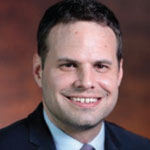
Banking 101: The Dentists’ Guide to Financing
Ryan Kopena
11:30 AM – 12:30 PM ET
This program will review what lenders are looking for when considering a loan and how to leverage the equity in your practice. Guidelines for selecting the right lender and loan will also be presented.
Register Now
12:30 PM – 12:45 PM Break
12:45 PM – 1:45 PM ET
The Ergonomics of Office DesignDesirée Walker, DDS1 CEU

The Ergonomics of Office Design
Desirée Walker, DDS
12:45 PM – 1:45 PM ET
Dr. Walker will review the key elements of office design from an ergonomic perspective. Beyond just changes to the operatory, an ergonomic focus can help you and your staff increase practice productivity, enjoyment, and longevity.
Register Now
9:00 AM – 10:00 AM ET
Executing the Vision – Part 1Michael Unthank, NCARB, DDS1 CEU

Executing the Vision – Part 1
Michael Unthank, NCARB, DDS
9:00 AM – 10:00 AM ET
In his keynote address, Michael Unthank, NCARB, DDS, discusses what constitutes a successful dental office designed to minimize stress, increase efficiency, and maximize production.
Register Now
10:00 AM – 10:15 AM Break
10:15 AM – 11:15 AM ET
Executing the Vision – Part 2Michael Unthank, NCARB, DDS1 CEU

Executing the Vision – Part 2
Michael Unthank, NCARB, DDS
10:15 AM – 11:15 AM ET
In his keynote address, Michael Unthank, NCARB, DDS, discusses what constitutes a successful dental office designed to minimize stress, increase efficiency, and maximize production.
Register Now
11:15 AM – 11:30 AM Break
11:30 AM – 12:30 PM ET
Interior Design Advice and TipsJoseph Miller1 CEU

Interior Design Advice and Tips
Joseph Miller
11:30 AM – 12:30 PM ET
You only get one chance to make a first impression. Joe Miller, Principal of JoeArchitect, presents his insights into interior design tailored to successful dental practices. From virtual modeling to renovations, construction costs to branding, take a deep dive into the details that convert good design to great design.
Register Now
12:30 PM – 12:45 PM Break
12:45 PM – 1:45 PM ET
Concept to Complete: A Case StudyAndrew D. Lyons II, DDS0 CEU

Concept to Complete: A Case Study
Andrew D. Lyons II, DDS
12:45 AM – 1:45 PM ET
Dr. Lyons relates his personal entrepreneurial journey from a group practice to a private practice. His insights into mistakes along the way and the partnerships that helped him achieve his vision round out the journey from “concept to complete.”
Register Now

“Digitally Driven Dentistry”: Utilizing Advances in Science and CAD/CAM Technology to Deliver Restorative Excellence
Sundeep Rawal, DMD
Friday, May 19, 2017 • 10:20 – 11:10
From treatment planning to design of definitive restorations, computers are changing the processes used to treat patients. Diagnostic and guided surgery planning software, in conjunction with CAD/CAM systems, allows clinicians to implement new technologies to make treatment protocols more efficient and less time-consuming, especially for innovative implant fixed and removable therapies. Using a suite of state-of-the-art concepts enables clinicians to easily deliver restorative excellence to their patients. This course will present a detailed, step-by-step approach to utilizing these CAD/CAM innovations and demonstrate the advantages technology can provide in daily dentistry. Specific clinical processes that can benefit the practitioner will be highlighted.
- Discuss the importance of thorough diagnosis and treatment planning using the interdisciplinary “team approach”
- List guidelines for proper patient selection, treatment planning, indications/contraindications, and diagnosis with the end prosthetic result in mind
- Describe the digital workflow required to facilitate treatment from the single-tooth to the full-arch implant restoration
Learning Objectives

Fully Edentulous Options for the Aging Patient
Stephen Parel, DDS
Friday, May 19, 2017 • 3:50-4:50
Coming Soon
Learning Objectives
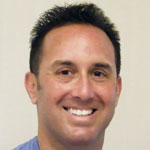
Advances in Site Development to Support the Restorative Result
Barry P. Levin, DMD
Friday, May 19, 2017 • 1:00-1:50
Despite the many advances in ceramics, composite resins, and zirconia, even the most elegant restorative therapies require a biologic frame. Healthy and stable hard and soft tissues must surround esthetic and functional restorations. The development of recombinant growth factors, bioabsorbable scaffolds, and various graft materials has enabled surgeons to recreate or preserve the tissues necessary to achieve optimal outcomes. This presentation will demonstrate site development prior to and simultaneous with dental implant placement.
- Discuss novel options and techniques for ridge augmentation prior to implant placement
- Describe how immediate tooth replacement can be most successful with simultaneous augmentation
- Discuss how the surgical and restorative team synergy results in predictable, stable, long-term results
Learning Objectives
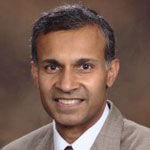
Minimizing Risk: Screw-Retained Versus Cemented Implant Restorations
Sree Koka
Friday, May 19, 2017 • 9:15 - 10:00
In this presentation, clinical experience and scientific findings will be considered to describe the risks/benefits, advantages/disadvantages, and prognoses for screw-retained and cement-retained restorations. The ideal implant-supported fixed restoration provides easy retrievability, low risk of biologic complications, and reduced need for additional treatment procedures such as grafting. Screw-retained restorations provide for these three important outcomes, while cement-retained restorations introduce unnecessary risks. Through careful diagnosis/treatment planning, prudent surgical technique, and placement of a screw-retained restoration, exceptional patient outcomes result that are maintained over the long term.
- Describe the benefits of screw-retained restorations
- Discuss why treatment planning should be undertaken to facilitate screw retention
- Explain why cement-retained restorations are associated with increased risk of biologic complications/adverse events, reduced retrievability, and inferior patient outcomes
Learning Objectives
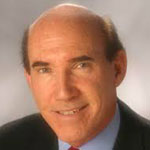
The Evolution of Immediate Implant With Immediate Provisional Restoration
David Gelb, DDS
Friday, May 19, 2017 • 1:50 - 2:40
Today it is possible to replace teeth with implants in one surgical procedure that is minimally invasive. This is predicated on the realization that osseointegration and bone regeneration can occur simultaneously as a tooth root is replaced with an implant fixture in single and multiple implant sites. Furthermore, throughout the healing period the provisional restoration guides soft-tissue maturation to optimum contour, esthetics, and substantiveness. The significant benefit is an anatomically correct site restoration with one procedure—truly a patient-preferred sequence from tooth to implant.
- Discuss the evolution of immediate implant procedures
- Describe the immediate implant/immediate provisional restoration protocol
- Explain the efficacy of immediate implant/immediate provisional restoration as compared to immediate implants without restoration
- Describe the clinical and patient advantages supporting the use of immediate implant/immediate provisional restoration
Learning Objectives
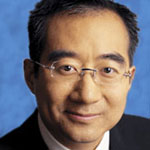
Anterior Immediate Tooth Replacement: Lessons Learned From 20 Years
Joseph Kan, DDS, MS
Friday, May 19, 2017 • 8:30 - 9:15
Achieving anterior implant esthetics is a challenging endeavor. Understanding the biologic and physiologic limitations of the soft and hard tissue will facilitate predictability in simple to complex esthetic situations. This lecture will focus on current implant treatment philosophies and methodologies for immediate tooth replacement in the esthetic zone.
- Discuss prognostic keys for predictable anterior immediate tooth replacement
- Explain what is known and unknown about bone grafting in socket gaps
- Discuss whether or not buccal bone is needed for successful immediate tooth replacement
- Evaluate whether or not soft-tissue grafting is necessary
Learning Objectives

New Ceramics, CAD/CAM, Implants, and the APC-Zirconia-Bonding Concept
Markus B. Blatz, DMD, PhD
Friday, May 19, 2017 • 3:00-3:50
While impressive and exciting, the recent evolution in ceramic and CAD/CAM technologies leaves many open questions. Do different ceramics require specific laboratory and clinical skills to function in the mouth? Is all zirconia the same? What treatment options are available for patients considering new ceramic and hybrid materials, adhesive technologies, and digital workflows? What are the issues surrounding CAM/CAM and ceramics in implant dentistry? This presentation will answer such questions and discuss esthetic, less-invasive, and long-term functional ceramic treatment options, ranging from conservative veneers to implant-supported full-mouth rehabilitations. It will explain new, high-translucent zirconia ceramics, along with their handling and broad indications as monolithic full-contour restorations. Additionally, because reliable cementation protocols are essential for clinical success of ceramic restorations, the simple APC-zirconia-bonding concept and other ceramic bonding strategies will be introduced. Finally, this presentation will review case selection, tooth preparation, digital manufacturing options, cementation techniques, and resin bonding technologies of new ceramics based on decades of research and the latest scientific evidence.
- Identify modern ceramic materials and their indications
- Discuss the history and development of new zirconia ceramics and CAD/CAM technologies and their application in implant dentistry
- Describe proper bonding protocols for zirconia and other ceramic restorations on teeth and implants
Learning Objectives
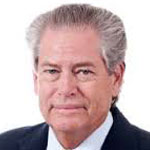
Implant Biomechanics and Material Selection for Predictable Results
Steve Hurson
Friday, May 19, 2017 • 11:10-12:00
Long-term, trouble-free implant treatment relies on proper case planning and execution. This presentation will examine the multifactorial science of marginal bone maintenance and remodeling. It will review the science of how implant materials and surfaces, connection type, and the location of rough and smooth surfaces all play a role, and will present a guideline for the types of implants to use to conform to these scientific principles for different applications. The biomechanics of implant prosthetics will also be discussed. With the selection of restorative materials and techniques having a major effect on the preservation of hard and soft tissues, a practical guideline for restorative material selection and dental laboratory techniques will be presented with an emphasis on simplicity and cost effectiveness.
- Describe the importance of properly matched components, precise fit, and accurate laboratory processing for trouble-free restorations
- Explain why careful selection of restorative materials is needed to obtain a soft-tissue seal to the restorative components on implants placed at bone level
- Discuss how the selection and application of the proper implant connection type is necessary to build a good base to prevent marginal bone loss
Learning Objectives

Transitioning Between Virtual and “Real” Realities – Making the Most of Digital Opportunities Within Restorative Implant Dentistry
Richard Sullivan, DDS; and Nobel Biocare Staff
Saturday, May 20, 2017 • 8:00-12:00
While emerging over 20 years as an alternative method of delivery, today the digitization of implant dentistry brings unrivaled advances. Developments now bracket the treatment delivery process from initial consult through final restorative design. Opening up new avenues of communication, digital production can simultaneously reduce time while improving already acceptable results. Working through the transition to digital diagnostic and restorative methods is an ongoing process. This participation workshop will alternate between the virtual and analogue worlds to explore diagnostic and treatment potentials available for single-tooth, short-span, and full-arch implant restorations. Unique capabilities of the digital workflow in diagnostic information gathering, planning, and provisional restoration will be emphasized. Hands-on exercises with computer software and practical application with corresponding components and procedures will be provided, along with guidance on maximizing efficiencies for treatment time and optimal restorative design.
- Discuss the process of importing patient soft-tissue and restorative information into a cone-beam scan for increased patient benefit
- Correlate the desired restorative outcome to the preoperative digital treatment plan
- Leverage planning for a more streamlined provisional restoration when immediate or early loading is indicated
- Explain how digitization enhances communication with patients, laboratory support, and co-treating colleagues


